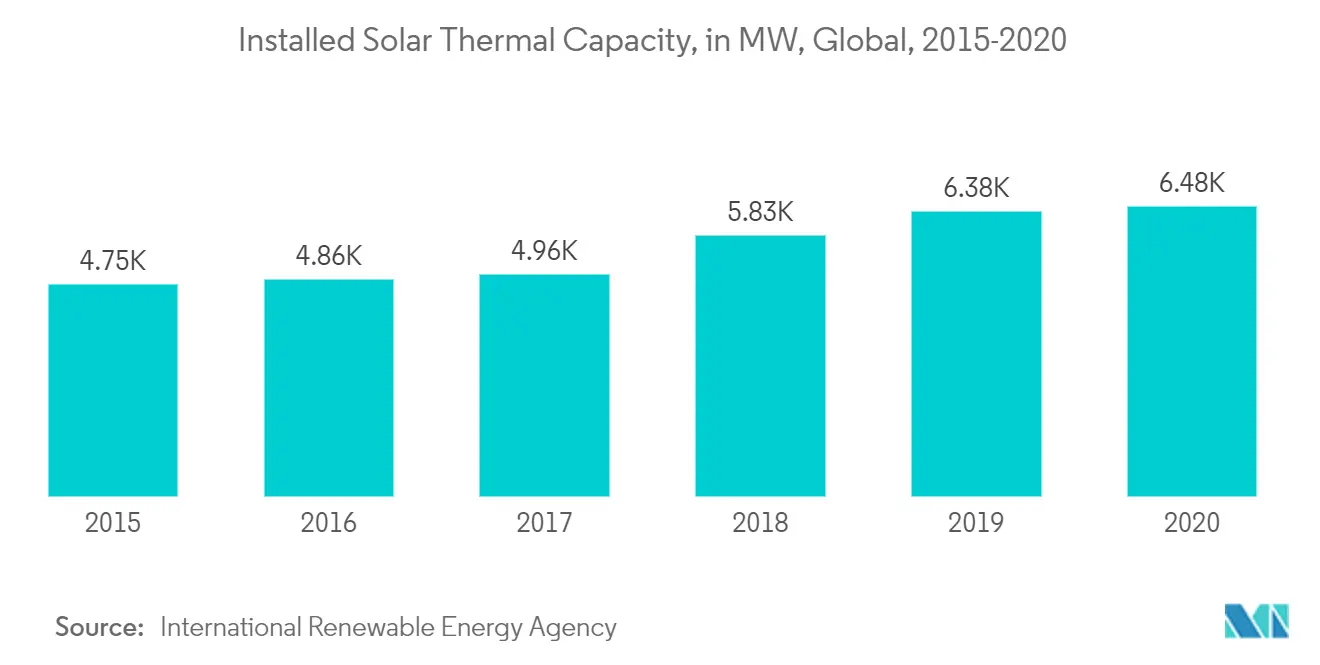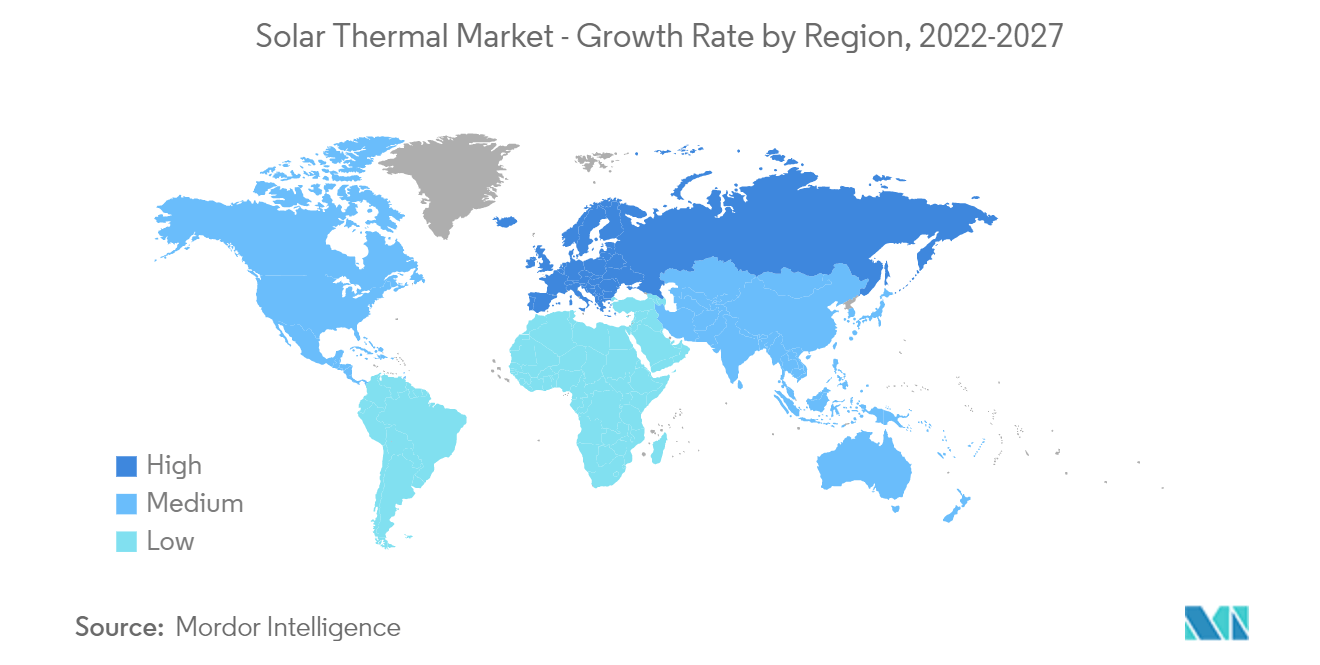Market Trends of Solar Thermal Industry
This section covers the major market trends shaping the Solar Thermal Market according to our research experts:
Residential Segment Expected to Dominate the Market
- The most highlighted driver of the residential solar thermal market is the growth in solar district heating projects across the globe. They play a crucial role in decarbonizing the heating sector and in responding to the increasing demand for an eco-friendly way of meeting the heating requirements, such as domestic water heating and space heating.
- The global installed solar thermal capacity stood at 6,479 MW as of 2020, a 36% increase in the capacity from 2015. The leading countries to steer the market are Germany, Denmark, and China. In 2020, Germany recorded 44 solar district heating plants with a collector surface of 107,000 sq. m. and a total installed capacity of 75 MW.
- The most rising trend in the solar thermal market is the solar district heating system coupled with seasonal storage. The most classic example is the solar district heating system recently established by Savosolar Oyj company in Cadaujac, France, in December 2021. The system is combined with a seasonal borehole thermal storage from AbSOLAR for supplying heat and domestic hot water to around 67 single-family houses connected to the network.
- The incentives offered by the government can propel the market to the greatest extent. For instance, in March 2021, Danish gas transmission system operator Evida decided to exempt those households who want to use renewable energy for heating instead of gas supplied through the grid from paying grid disconnection fees.
- Such developments are likely to bolster the residential solar thermal market in the near future.

Europe Expected to Witness Significant Growth
- The European countries have witnessed an upsurge in the solar thermal market, with the highest consumption in solar district heating systems. The falling costs of the technology and renewable energy targets set by the governments are the factors accountable for the high growth of the market.
- The European Union succeeded in achieving the 2020 target with the increase in renewable energy consumption from 19.7% of gross final energy consumption in 2019 to 21.3% in 2020. The EU Commission has set more ambitious goals to increase the share to 100% by 2050.
- As an example, in January 2020, the European Parliament adopted the resolution on the European Green Deal, which focuses on the importance of decarbonizing the energy sector as the topmost priority for a net-zero greenhouse gas emissions economy by 2050.
- In 2020, the Horizon Europe (2021-2027) program was launched to support research and innovation initiatives in the major areas of the economy financially, of which climate change is one of them. And most importantly, the EU mission of 100 climate-neutral and smart cities by 2030 is expected to accelerate the demand for renewables in energy generation in all the European nations.
- Due to such developments, the European solar thermal market is expected to ace the market in the near future.


